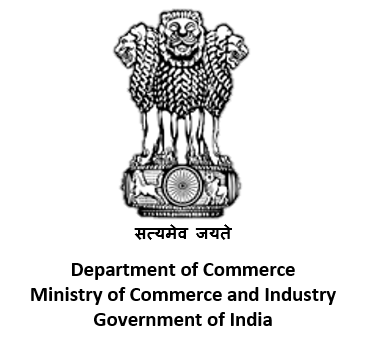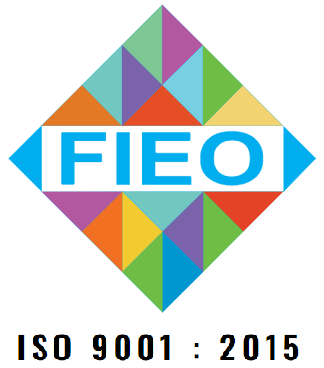Comprehensive Economic Cooperation Agreement between India and Malaysia (CECA)Answer: India and Malaysia signed a Comprehensive Economic Cooperation Agreement (CECA) on 18th February, 2011 which came into force on 1st July 2011. The CECA covers Trade in Goods, Services, Investment and Economic Cooperation. It contains 16 Chapters and 15 Annexes including schedules of commitments under Goods and Services. The details are available at DoC website: http://commerce.gov.in/trade/IMCECA/title.pdf Answer: The CECA is an addition to the existing India ASEAN Agreement on Trade in Goods. Under the CECA, India has offered ASEAN-plus tariff concessions to Malaysia on 76 items and thereby given access to products such as fruits, cocoa, and synthetic textiles etc. Malaysia has also offered similar tariff concessions to India on 140 items, including on basmati rice, mangoes, eggs, trucks, motorcycles and cotton garments these are items of considerable export interest to India and for which access is being made available for the first time. In the auto sector, India got non-reciprocal market access for motorcycles (HS871120 –up to 150cc) and trucks (HS870410,21,31,32,90 – Dumpsters) for the first time under any FTA. Answer: Tariff concessions are offered either through tariff elimination or tariff reduction. The List of items for which a) tariffs are to be eliminated is called the Normal Track, b) tariffs are to be reduced to 5% is called the Sensitive Track and c) tariffs are to be reduced to certain pre-determined levels is called the Special Products. Reduction of Applied MFN rates to 50%, by 50% and by 25% is called the Highly Sensitive List For some tariff lines, reduction in tariff as per the pre-determined schedule is called the Special Track. Answer: Yes, the end dates for ASEAN has been advanced in IMCECA by tariff elimination/reduction under Normal Track-1, Normal Track-II and Sensitive Track have been advanced/fast tracked by 3 to 6 months. For example the end dates for tariff elimination under Normal Track-1 have been advanced from 31 December, 2013 to 30 September, 2013 while those for both Normal Track-II and Sensitive track have been advanced from 31 December, 2016 to 30 June, 2016. Answer: The IMCECA has a rules of origin with twin criteria’s of CTH at sub-heading level (6 digit transformation) and a 35% value addition. Further, it allows for Regional Cumulation. In addition, there are Product Specific Rules for 42 items including wood products (Chapter 44), gas pipes/tubes (Chapter 73), aluminium bars/rods (chapter 76) and machine tools (Chapter 82). Answer: The provisions in the Chapters on Sanitary and Phyto-sanitary (SPS) Measures provide the framework for addressing regulations and standards pertaining to human, animal and plant life or health while the Chapter on TBT provides the framework for product testing and certification requirements. Answer: Under the Chapter of Dispute Settlement Mechanism, the Parties shall resolve the disputes, if any, through consultations and negotiations, failing which, they may resort to an arbitral tribunal, consisting of three members. Each Party to the dispute shall appoint a member and the third member, who would be the Chair of the panel, shall be appointed by mutual agreement. The CECA provides for (i) reviewing the implementation and operation of the Agreement;(ii) consider any matters relating to the implementation of the Agreement; (iii) supervise and coordinate the work of all Sub-Committees established under this Agreement; and (iv) adopt any decisions and recommendations of the Sub-Committees. Answer: Both the parties can resort to bilateral safeguards measures in the event of increased imports as a result of tariff reduction which causes or threatens to cause serious injury to the domestic industry. While the measure is to be imposed after due investigation, it can be in the form of • suspension of further reduction of duty • increase of tariffs upto the MFN level On anti-dumping measures, both Parties would conduct all investigations against goods dumped from the other Party keeping in view the recommendations of the WTO Committee on Anti-Dumping Practices as well application of the lesser duty rule (LDR) and prohibition of zeroing. Answer: There are broadly 11 sectors and 72 sub- sectors included in the agreement. The sectoral commitments of the agreement covers Business services, Communication Services, Construction And Related Engineering Services, Distribution Services, Educational Services , Environmental Services ,Health Related And Social Services, Tourism And Travel Related Services, Recreational, Cultural And Sporting Services, Transport Services,Other Services (Skills Training Services ). Both India and Malaysia have agreed not to include any additional commitment in Financial Services. Answer: As per the World Development Indicators of World Bank (2012), Services account for 57% of GDP in India and 49% of GDP in Malaysia. The share of trade in services in GDP for India and Malaysia was 14.9% and 26.3% respectively. Answer: Malaysia’s offer to India on services is more than its is WTO revised Offers in the WTO and also compares favourably with its commitments under other FTAs. Some of the salient features of these commitments are: • There is a separate chapter on Mode 4 (Trade through movement of natural persons). • Malaysia has agreed for common definitions for categories of natural persons resulting in conceptual clarity. • Commitment for a given duration of stay for each category of natural persons engaged in the supply of services provides a sense of certainty to the service supplier. • Malaysia has removed all requirements relating to Economic Needs Tests and Labour Market Tests from its schedule of commitments. This is a major gain for India in terms of ensuring clarity and certainty in commitments. Therefore, for approved categories no prior examination of domestic labour availability is required. • All numerical limitations have been removed from horizontal section. • Malaysia has agreed for GATS plus disciplines in Domestic regulations. • Malaysia is committed to encourage conclusion of MRAs in service sectors such as accounting and auditing, architecture, medical (doctors), dental and nursing within a reasonable period of time from the date of entry into force of this Agreement. Answer: The agreements covers Contractual Service Suppliers (CSS), Independent Professionals (IP), Business Visitors (BV), Intra-Corporate Transferees (ICT) and Installers & servicers. Answer: Malaysia has offered commitments in the categories of Contractual Service Suppliers (CSS) and Independent Professionals (IP), the two categories of natural persons delinked from requirements of commercial presence, which are very important for India. Malaysia has offered access for CSS and IP in commercially meaningful sectors and professions including Computer and Related Services (CRS), accounting and auditing, architecture, urban planning, engineering services, specialized medical and dental services, nursing, physiotherapy, paramedics and pharmacy, veterinary services, Management consulting services, Research and Development Services including in Technical testing and analysis services, lecturers in higher education, etc. Answer: Quantity Surveyor/Cost Engineer, Property Valuator, Dental Specialists (For Institution of Higher Learning), Pharmacist, Nurses (Specialist), Physiotherapists & Paramedics, Taxation Professionals, Lecturer (For Institution of Higher Learning), Town Planner, Dock & Harbor Construction Engineer, Information Technology Auditor, Audiovisual Equipment Engineer. Answer: Malaysia has agreed that Business Visitors and Intra corporate transferees (ICTs) will be allowed access in all sectors and sub-sectors committed by Malaysia (unless specified). Malaysia has also offered an additional category of ‘installers and servicers’ too. Answer: Business Visitors (BV)-90 days (multiple entry visa for up to 5 yrs.) Intra Corporate Transferees (ICT) Senior manager-10 yrs; Specialists/Experts- 5 yrs; Installers and servicers- 3 months (extensions may be considered) Contractual Short Term Service Suppliers (CSS)- One yr. Independent Professionals (IP)- One yr. (extendible for one more yr.) Answer: Malaysia has agreed for GATS plus disciplines in Domestic regulations and commitment, albeit best endeavour, for negotiating MRAs in professional services. Further, Malaysia has also agreed for common definitions for categories of natural persons resulting in conceptual clarity. Answer: Malaysia has offered Modes 1 and 2 as 'none' across the board (except for Education services). This is a significant gain for India in view of our strength and technological capability in the IT and ITES industry. Answer: Malaysia has taken very good commitments in CRS – offered almost fully at 3 digit level with cross border ‘none’; 100% foreign equity allowed and none limitations in mode 3. Answer: In Construction Services, Malaysia’s offers to India both in terms of sectoral coverage and foreign equity ceiling are better compared to Malaysia’s offers either at the WTO or to any FTA partner. Other than full sectoral coverage, Malaysia has also committed 51% foreign equity cap for certain high end construction services (foreign equity cap is 30% in Malaysia’s RO at the WTO). Answer: Full coverage has been taken for R&D (except for those involving its natural resources, biodiversity and genetic materials). Foreign equity ceiling is 51%. Answer: Malaysia has offered commitments in cross border services in ‘Other Business Services’ such as Collection agency services, Duplicating services and Speciality design services. These ‘Other Business Services’ are emerging as significant contributor to India’s foreign exchange. Malaysia has also taken almost full commitments with 100% foreign equity in management consulting services and Technical Testing and Analysis Services. These professional managerial and technical consulting services are of vital interest to India. Answer: In recreational, cultural and sporting services, Malaysia has taken full commitments for entertainment and sporting services with cross border ‘none’; 100% foreign equity allowed and none limitations in mode 3. Answer: The economic indicators of Malaysia as shown in the Appendix shows a stable macroeconomic environment in terms of GDP growth and the rate of inflation. The ‘Ease of Doing Business 2014 report’ by the World Bank and the International Finance Corporation, which aims to provide a quantitative measure of business regulations and protection of property rights across 189 economies, lists the Malaysian economy at rank 06, much ahead of Asia’s two big economies, China and India (ranked 96 and 134,respectively). The Swiss-based Institute for Management Development (IMD), according to its 2013- 14 World Competitiveness Yearbook, places Malaysia as the 24th most competitive country in the world (60th position for India out of 148 countries ). The country has also established five economic growth corridors, namely, Iskandar Malaysia in Southern Johor (IRDA), the Northern Corridor Economic Region (NCER) the East Coast Economic Region (ECER),the Sabah Development Corridor (SDC) and the Sarawak Corridor of Renewable Energy (SCORE),aimed at promoting free trade and business investment. Malaysia is also emerging as a major potential investor in India – in telecommunications, construction (highway and road development), tourism, healthcare, etc. FDI inflow has its own additional benefits in terms of inflow of technology, increase in economic activity and employment. Answer: The Investment Chapter aims to promote investments and create a liberal, facilitative, transparent and competitive investment regime. • It would also serve to strengthen cooperation in investment, improve transparency of investment rules and regulations and provide for protection of investments. • It purports to protect, promote and remove barriers to foreign investment flows in order to stimulate new investment flows between India and Malaysia. |
.gif)
.gif)







